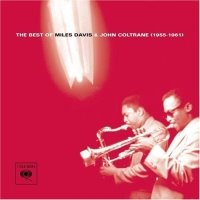Stanley Turrentine - Sugar (1970)
 During the 1960s, tenor saxophonist Stanley Turrentine had amassed a solid if unspectacular track record both as a leader and sideman for the Blue Note label. The Pittsburgh native might be likened to a ball-player who for a decade hits .285 without making the all-star team, or to an actor who's usually third-billed but occasionally gets to play the lead, always to favorable notices.
During the 1960s, tenor saxophonist Stanley Turrentine had amassed a solid if unspectacular track record both as a leader and sideman for the Blue Note label. The Pittsburgh native might be likened to a ball-player who for a decade hits .285 without making the all-star team, or to an actor who's usually third-billed but occasionally gets to play the lead, always to favorable notices.While never an innovator, Turrentine was surely one of Blue Note's key players in the field of soul-jazz, the strongly blues-based, gospel-influenced branch of hard bop, which itself was a simplified take on the vertiginiously complex bebop form. Fans and critics alike responded warmly to his juicy (but never overripe) tone, bluesy economy, unstinting sense of swing and soulful ballads. Most importantly, there was the unaffected way in which his solos told a story without talking down to the listener.
Turrentine, then, was a worthy choice, but by no means an obvious one, to be signed by Creed Taylor when in 1970 the successful entrepreneur and music producer launched his own CTI label. Yet Sugar -whose shortest track was 10:09 long- was a surprise hit album. The Turrentine-composed title theme, a minor-key 16-bar blues with modal implications, has become something of a jazz standart.
Lengthy selections notwithstanding, Sugar's three studio cuts constitute a sleeker, more radio-friendly version of a typical Blue Note session from the early-to-mid 1960s. Sustained grooves, tuneful solos, and the use of the then-fashionable electric piano are of the essence. Three members of both of the octets heard herein (Stanley Turrentine, Freddie Hubbard and Ron Carter) were mainstays of Blue Note in the 1960s, while guitarist George Benson had occasionally turned up as a sideman. Plus, the masterful Rudy Van Gelder, with whom Taylor created the designer sound that would come to be associated with CTI, had engineered numerous classic Blue Note 1950s and 1960s dates.
CTI, like Blue Note, had a "look" as well. As he had at Impulse and A&M, Taylor favored gatefold sleeves for his LPs. CTI's covers featured color compositions of gallery quality by some of America's leading photographers. The pictures were often slightly mysterious and/or slyly sexy. Upon scanning the LP bins, one could immediately seperate a CTI product from the rest of the pack.
But even during the peak of the psychedelic era, most people did not purchase a disc to groove on its cover graphics, however artistic. Once one got past Sugar's erotic cover, the set's seductive grooves, both straight ahead or, as on organist Butch Cornell's "Sunshine Alley", post-boogaloo, were deep and adroitly dug. And its solos, particularly the leader's exultant tenor and Benson's flowing guitar, were repeatedly rewarding.
Turrentine's segment on "Impressions" is most instructive. Coltrane's oft-covered blues is in this case taken at finger-snapping medium tempo, rather than at the great man's gallop, with Ron Carter's bass, Billy Kaye's drums and Richard Landrum's congas doing the New York Latin-tinged bounce. Turrentine strings together phrase after piquantly bluesy phrase, resulting not only in a whole that exceeds the sum of its parts but a wholly relaxed, non-virtuosic take on a tune that's synonymous with relentless virtuosity. It's this kind of unpretentiousness that makes "Impressions", and all of Sugar, as sweet and tasty as homemade strawberry short cake.
